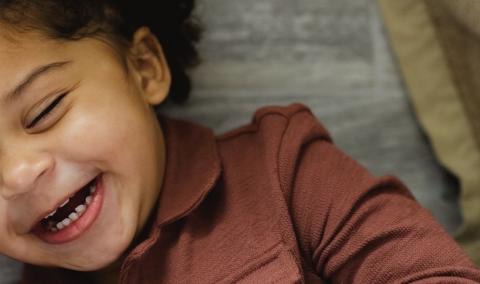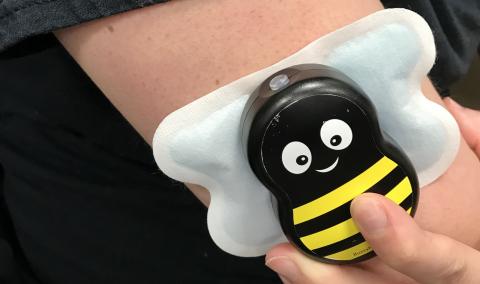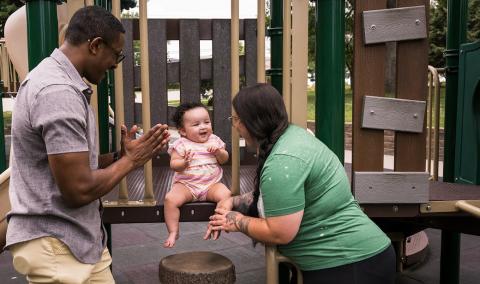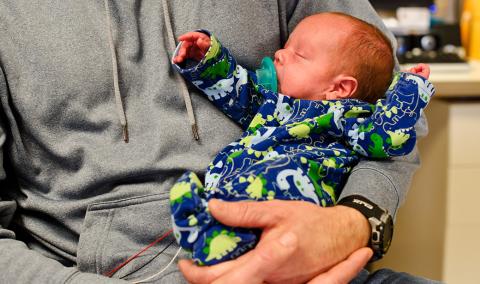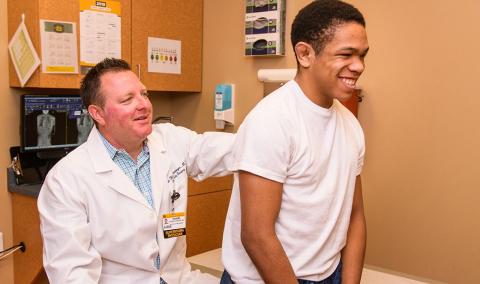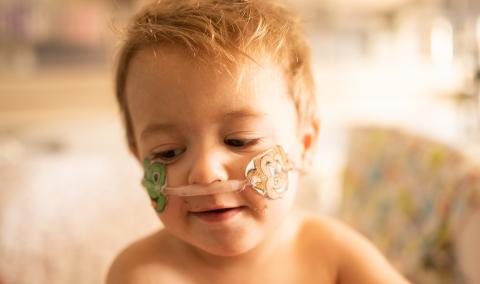Polydactyly literally means “extra digits.”
When your child is born with an extra finger or digit, the Children's Health specialists at Children’s Hospital are here to evaluate them and create an individualized treatment plan. We will work with you and your child throughout the entire treatment process — from diagnosis to possible surgery to aftercare.
Our doctors, surgeons and occupational therapists at MU Health Care are experienced in the treatment of polydactyly. We create a tailored treatment plan for your child to get the best results.
We usually treat children by surgically removing the extra finger, which can be a highly complex surgery if the digit is fully formed. Our surgeons are experienced at performing this type of surgery in children. When needed, occupational therapy helps children gain the best possible use of their hands or feet.
Surgical treatments for polydactyly
The type of surgery your child needs depends on the specific type of this condition:
- Pre-axial polydactyly. With this condition, we reconstruct a single thumb from the two duplicated, or split, thumbs. This procedure involves reconstructing the skin and soft tissues, the tendons, joints and ligaments to create a single thumb.
- Post-axial polydactyly. When only a narrow stalk of soft tissue attaches the extra digit, your child's surgeon may remove it either with a minor operation or — if the stalk is narrow enough — by ligating (tying up) the stalk. When the extra digit is well-formed, the surgery is more complicated and may involve reconstruction of soft tissues, tendons, joints and ligaments as in pre-axial polydactyly.
- Central polydactyly. With this condition, your child requires a complex surgical procedure to reconstruct the hand. The procedure reconstructs the soft tissues, tendons, ligaments and joints.
In some of these cases, your child will require more than one operation.
Frequently asked questions about polydactyly
Get answers to commonly asked questions about this condition.
What is polydactyly?
Polydactyly is one of the most common congenital hand anomalies. With this condition, your child be born with an:
- Extra thumb
- Extra small finger
- Extra digit in the central part of the hand (less common)
- Extra toe
Does polydactyly cause my baby any pain?
No, this condition does not cause your baby pain.
Who gets polydactyly?
Any baby can potentially be born with polydactyly. Most types of radial polydactyly are not inherited. Post-axial polydactyly with a small, poorly formed extra digit is ten times more common in African-Americans than in Caucasians. It’s inherited as an autosomal dominant trait (that is, there is a 50 percent chance of polydactyly in the children of an affected individual).
However, postaxial polydactyly with a well formed extra digit is equally common in all ethnicities. Central polydactyly is inherited as an autosomal dominant condition with variable expression, meaning that it may be more or less severe from one generation to the next.
What causes polydactyly?
When your baby’s hands and feet are developing in the womb, they start out as flat “paddles” that then normally separate into five digits. Polydactyly occurs when this separation process is excessive, and an extra “segment” is created. This may be caused by a genetic abnormality or by environmental influences.
What are the main issues related to this condition?
The primary issue in most types of polydactyly is how well your baby can use his or her hand and fingers. Appearance of the hand is also an issue, but is secondary to function.
Are there other problems that occur commonly with polydactyly?
Certain rare types of pre-axial polydactyly are associated with other conditions, such as:
- Blood disorders
- Craniofacial abnormalities
- Heart abnormalities
If your baby has post-axial polydactyly in which the extra digit is well formed, he or she is likely to also have polydactyly of the feet.
What happens between the time my baby is born and the first surgery?
You meet with one of our plastic surgeons soon after your baby is born. In some cases, the diagnosis is made prenatally by ultrasound exam, and you may have the opportunity to meet before your baby is born. Our team examines your baby and takes X-rays of the affected hand. Our surgeon continues to periodically examine your baby in our clinic in the months before surgery and will carefully explain the treatment plan and the details of the surgical procedures to you. Usually, your baby won’t need any special treatment or therapy prior to surgery.
Related Conditions & Treatments
- Adolescent Medicine
- Chest Wall Deformities
- Down Syndrome
- Emergency Care for Kids
- Gastrostomy and Feeding Access Program
- Hyperbaric Oxygen Therapy
- Juvenile Diabetes
- Neonatology
- Pediatric Anesthesiology
- Pediatric Cancer
- Pectus Carinatum
- Pectus Excavatum
- Pediatric Cardiology
- Pediatric Dermatology
- Pediatric Development and Behavior
- Pediatric ENT (Ear, Nose and Throat)
- Pediatric Epilepsy
- Pediatric Eye Care
- Pediatric Gastroenterology
- Pediatric Infectious Diseases
- Pediatric Inpatient Rehabilitation
- Pediatric Nephrology
- Pediatric Neurology
- Pediatric Neurosurgery
- Pediatric Orthopaedics
- Pediatric Plastic Surgery
- Pediatric Primary Care
- Pediatric Psychiatry
- Pediatric Pulmonary Medicine
- Pediatric Sleep Medicine
- Pediatric Surgery
- Pediatric Surgical Services
- Pediatric Urology
- Pediatric Vascular Anomalies
- Pediatric Weight Management
- Sickle Cell Disease
- Aerodigestive Program




